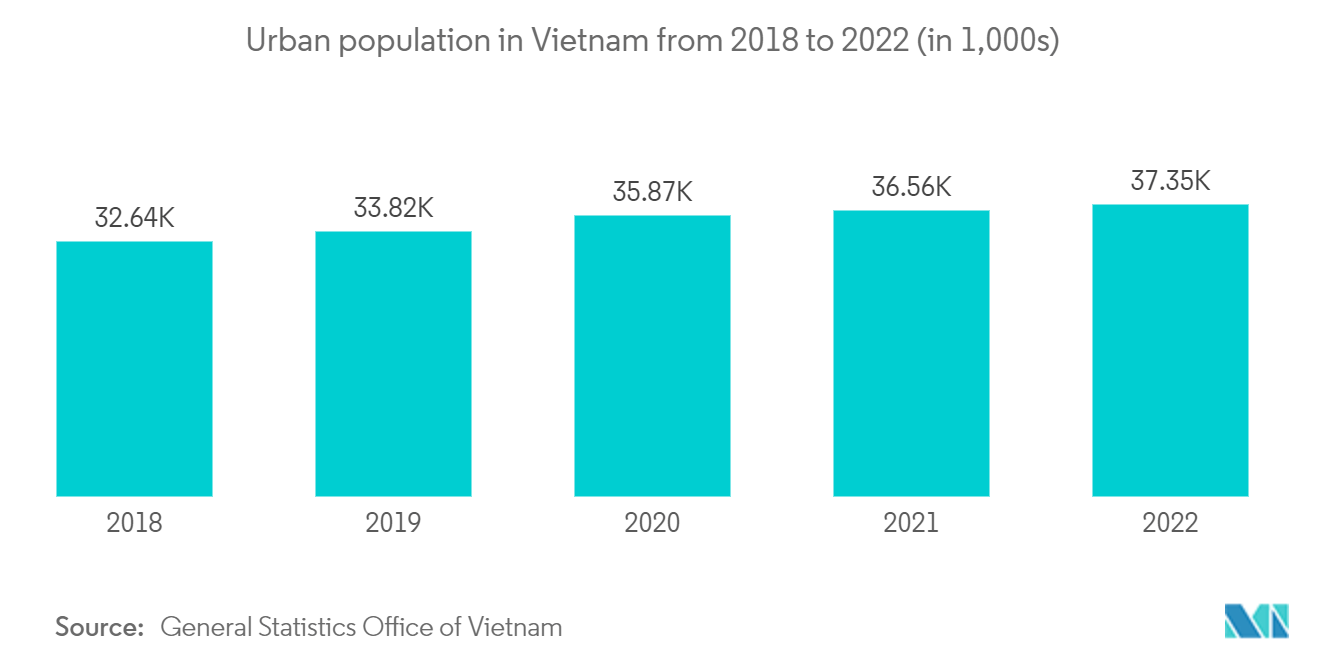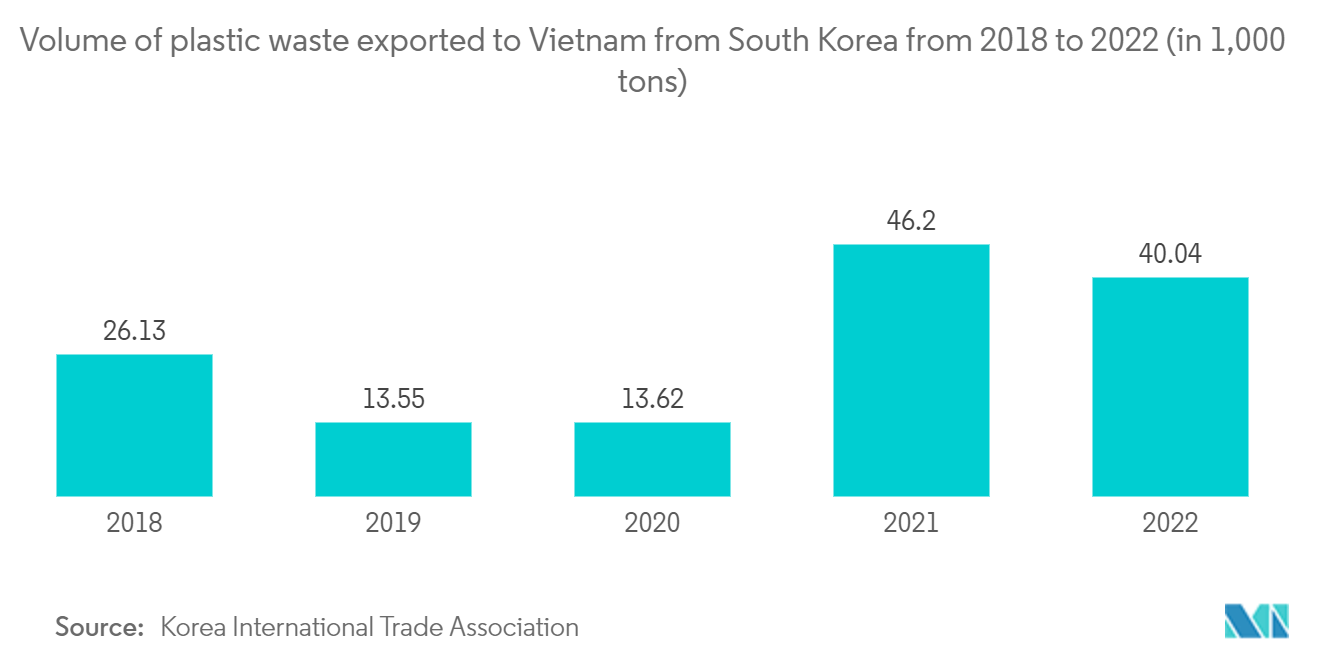Market Trends of Vietnam Waste Management Industry
Rising Waste Generation due to Rapid Urbanization and Industrialization
- Vietnam’s rapid growth and industrialization have caused negative impacts on the environment and natural assets.
- According to the World Bank, from the beginning of its market transformation, Vietnam has emerged as one of the world’s fastest-growing per-capita greenhouse gas emitters.
- Vietnam Briefing quoted data from the Ministry of Natural Resources and Environment (MoNRE) as saying that the country produces approximately 60,000 tonnes of household waste each day. Most notably, the urban areas of Hanoi and Ho Chi Minh City alone account for a significant portion, generating 7,000 to 9,000 tonnes of trash each, with this amount projected to increase by 10% to 16% by 2025.
- Despite the staggering volume of waste generated, waste treatment in the country still needs to be more effective. Currently, according to MoNRE’s National Environmental Status Report in 2021, the majority of the waste is taken to landfill sites, but only 20% of it meets national sanitary requirements.

Industrial development is acting as a significant growth-inducing factor by increasing the volume of industrial waste
- The current status of waste management in Vietnam presents significant challenges due to the huge amount of waste generated daily. According to data from the Ministry of Natural Resources and Environment (MoNRE), Vietnam produces approximately 60,000 tons of household waste each day. Notably, the urban areas of Hanoi and Ho Chi Minh City alone account for a significant portion, generating 7,000 to 9,000 tons of trash each. This amount is projected to increase by 10-16 percent by 2025.
- Việt Nam’s industrial production this month continued a more positive trend, with the index of industrial production (IIP) estimated to rise by 2.9 percent over the previous month and 2.6 percent over the same period last year.
- In the first eight months of 2023, the number of key industrial products increased sharply over the same period last year, including sugar (up 34.9 percent), fertilizer (up 14.2 percent), gasoline and oil (up 10.1 percent), television (up 10 percent); chemical paint (up 9.5 percent); cigarettes (up 8.6 percent); clothing (up 8.6 percent); and rolled steel (up 6.5 percent).


